Last year my parents moved to a new home. Whist packing their belongings into moving boxes, two boxes with Lego emerged from what was once my bedroom. Although this Lego has been played with by many visiting kids since I left the house to study at the university, my mom has always guarded these Lego boxes with great care, as after all these were special boxes, these were my boxes. I must have spent hundreds of hours of my childhood playing with these Lego bricks.
Because my parents moved to a smaller home I agreed to take the Lego boxes. So after 35 years I was reunited with my Lego. Looking at the Lego it got me thinking: what if I would use these vintage bricks to build something that, when I was young, was far too complex to build? What if I would create one of the train yards from the Lego Idea Book I had as a kid?
A couple of years ago I thought it would be fun to see if I could get my hand on the Lego Idea Book I used to have as a kid from which I built many of the simpler models. I did not know the name of the book, but I did remember there was a huge Apollo rocket launching pad in it. With some help of the online community I was able to get a well kept specimen from the US on Ebay. Browsing through this book was like stepping into a time machine: many forgotten memories resurfaced. It was a weird but very satisfying experience! It turned out the book is called Lego Idea Book 241, and it was published in 1969. I must have been 7 or 8 when I got a copy.
So, with my Lego boxes and the Lego Idea Book, I decided to see if I could build the 12V train yard example. For those familiar with the book, it’s shown on page 69.

Although two boxes filled to the brim with Lego may seem a lot, when you start building something like this, very quickly you discover that it’s nowhere near enough. The amount of bricks required to build this train yard is enormous. For instance: for this particular example you need well over a thousand white “macaroni” type bricks, most of them are used in the skyscrapers and radio tower.
So, If I wanted to proceed with my plan I had to get additional Lego. But there’s a catch, because this Lego is 50 years old! So I needed to get 50 year old Lego. It took me a couple of months on Ebay and Marktplaats (NL) to purchase lots of vintage Lego. I learned that typically these lots cost roughly 10 Euro/kg. Even though I sourced vintage Lego, they all came mixed with more or less new Lego. The new Lego was of no use to me, so at one point I resold a sporting bag full of useless new Lego.
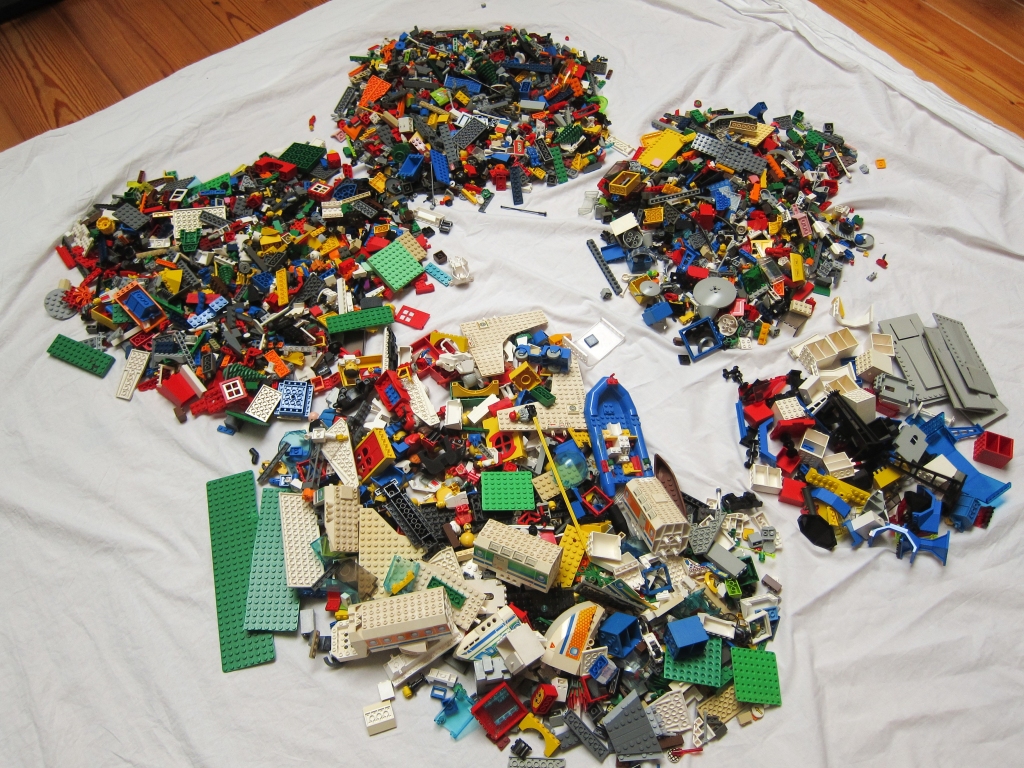
Where Ebay and Marktplaats were good sources to acquire bulk Lego, sourcing particular parts like plates and windows using these online auction sites turned out to be difficult and costly because of shipping costs. Most of the Lego came from Germany. Then I discovered Bricklink and this basically solved all my remaining missing-brick problems. For instance this is where I got my thousand+ “macaroni” bricks and hundreds of vintage light grey plates.
Because all Ebay Lego was dirty, smelly and sticky to some extend, you know kids… I decided to wash all in the washing machine. To do so you need to select a low temperature (30-40C) delicate-fabric program. Do not select a regular program as your bricks will get ground! I put the bricks in small amounts in a net used to wash bras an other delicate materials and secured it wit an extra net in case the inner net would open or tear. There was one lot from Germany that had been stored in a basement and was so dirty that I had it soaked overnight in a bucket with warm water and soap (Biotex) prior to washing it in the machine. Once washed the bricks were spread out on a sheet to dry.

With the amount of Lego I collected – roughly 10 boxes – this washing in small volumes takes some time, but working with nice clean bricks makes it worth while. Once washed I sorted the bricks on color and parts like wheels, windows, rails, gears. Sorting on color reduces the searching of a particular brick by a factor of six, which is quite significant. I did not sort on brick-type and size as some do, I don’t think it is worth the effort. Also, spreading out the bricks of a particular color on a sheet on the floor – rather than in a box – greatly enhances searching further.
Working with old Lego introduces an additional challenge: very old bricks from the 50’s and 60’s were not made of the current ABS plastic, but of cellulose acetate. Though they look very similar, they are actually quite inferior: they tend to be warped. Initially I thought these bricks were fake, but they are not, they are just old. You need to get rid of them as they mess up your builds. Since they are quite difficult to discriminate visually, I ended up sorting out the suspicious ones on sound: ABS bricks emit a high-pitched sound when dropped, in contrast acetate bricks emit a lower sounding “thud”.

Apart from being dirty and sometimes warped, old bricks come with another handicap: they yellow over time. This is especially the case with white bricks and less so for grey and blue. It turns out this yellowing can be undone using hydro-peroxide and UV light. There are many video’s on YouTube showing how this can be done using sunlight. However, since The Netherlands is not the sunniest of places and since I did not want to be dependent on the availability of sunlight, I decided to build a UV light box to restore the color of my yellowed bricks.
After washing, sorting and bleaching I was ready to start building. Now and again I ran into a shortage of one brick or another and building stalled for a week or so until the missing parts arrived. It turned into a pleasant after-work activity during the summer, completing one building per evening on average.
The 12V train yard example in the Idea Book consists of a number of pages with different views and details of the build. Consulting these different pictures with magnifying glasses I was able to work out a lot of information, but in the end some information was lacking. Some sides were just not photographed and thus I had to design some of the invisible sides myself.
This introduces an interesting novelty, because for the first time in 50 years hitherto invisible sides of some of the buildings are revealed in my pictures below. Actually, this turned out not to be completely true, because some time after I completed the build I discovered that Idea Book 241 was followed by Idea Book 242 – which of course I immediately purchased on Ebay – which included pictures of this 12V train yard, including some views that were not available in the 241 book. Of course, my designs of invisible parts differed from the originals. Yet it was fun to compare my designs with the originals.
With most of the components built, It was time to put it all together. To do so I put part of the track layout on the floor to see how big the supporting table should be. It turned out quite large actually! I settled on 3 plates of standard dimensions 244 x 122 cm, creating a table of 366 x 244 cm. Since it was my goal to exactly reproduce the images in the original Idea Book, I had to think of access to the build from a photographic perspective. I should be able to copy the lighting and take the shots from the same standpoints. In the end I decided I had to set up the table following the short side of the room, along the photography background that I happen to have for photo shoots. As a matter of fact, having all this photo gear allowed me to lighten the set similar to the original. The train yard was built in sections because the table is impractically large to reach the center from the side.

With the set built, It was time the set up the lights and reflectors trying to reproduce the original lighting. This I managed to get right to a large extend, but in the end it was still a bit off, mainly due to a lack of space in my room. Also I decided I liked a lighter background, so I put more light on that. I used my complete set: two umbrella’s on the left and right front side for lighting of the white background with some spill to the Lego build, a soft box from the top, spilling on the background, and one wide spot on the right side to cast the hard shadows also seen in the original photo.
After some trial and error I concluded that the original scene was shot with a 50 mm lens, so that’s what I settled for too. I could not fully set my camera at the same height as the original, for then de view would be blocked by a lamp that is too much hassle to remove. So I accepted that my point of view would be slightly lower than the original.
With this all done, here’s the part you’ve been waiting for: recreating 50 years of Lego history! Building now at age 54 what I was unable to build when I was 8 years old.






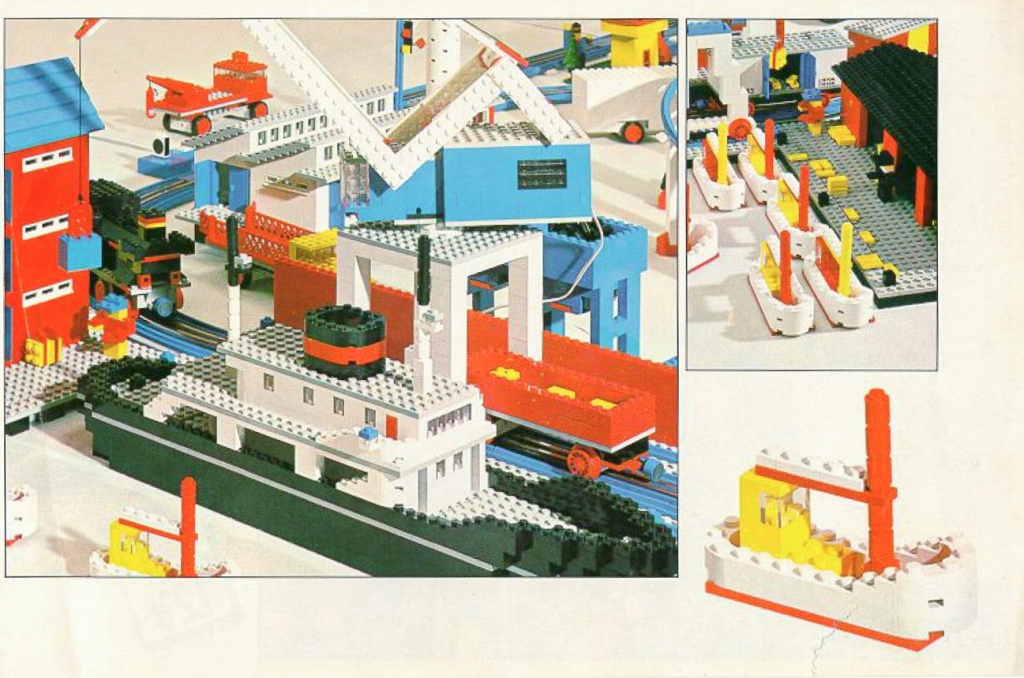
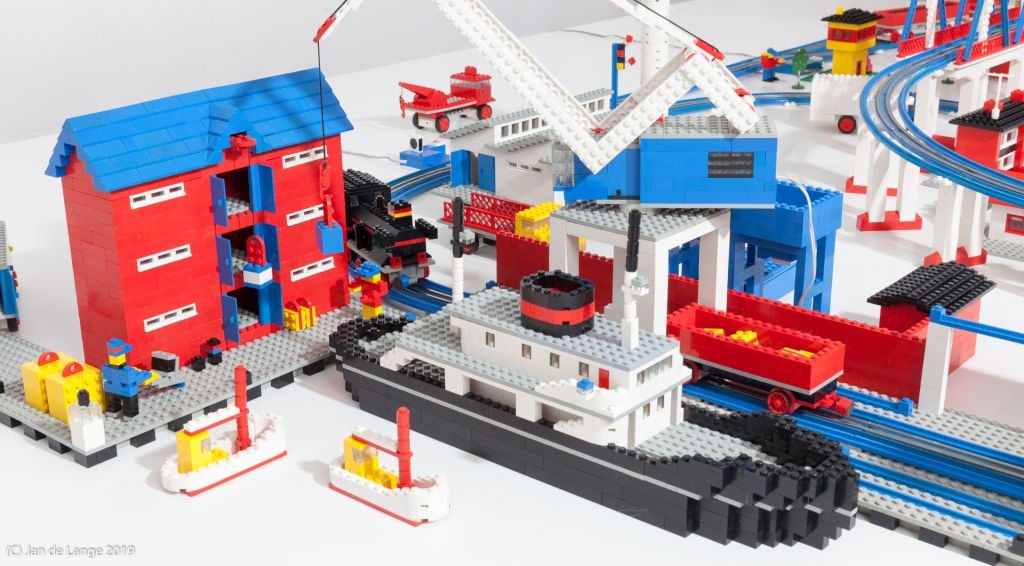
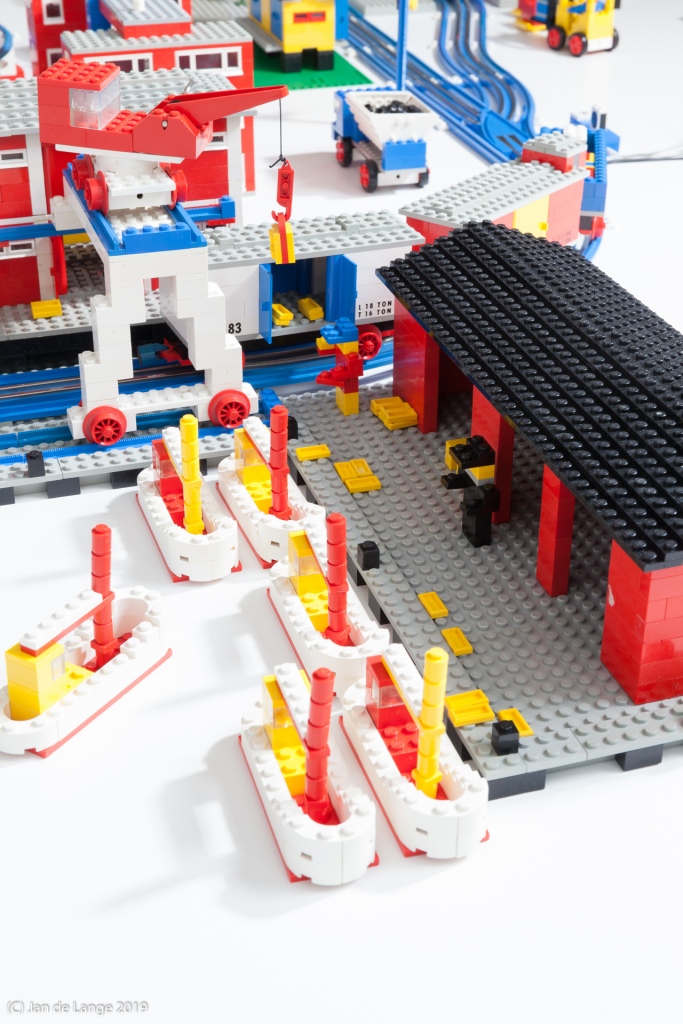
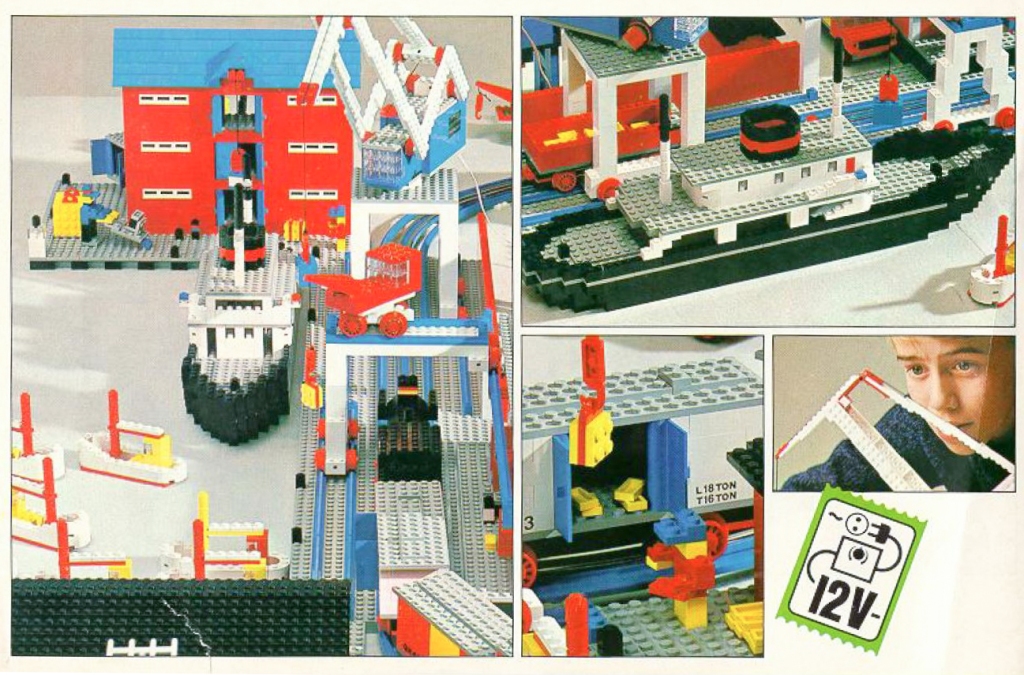

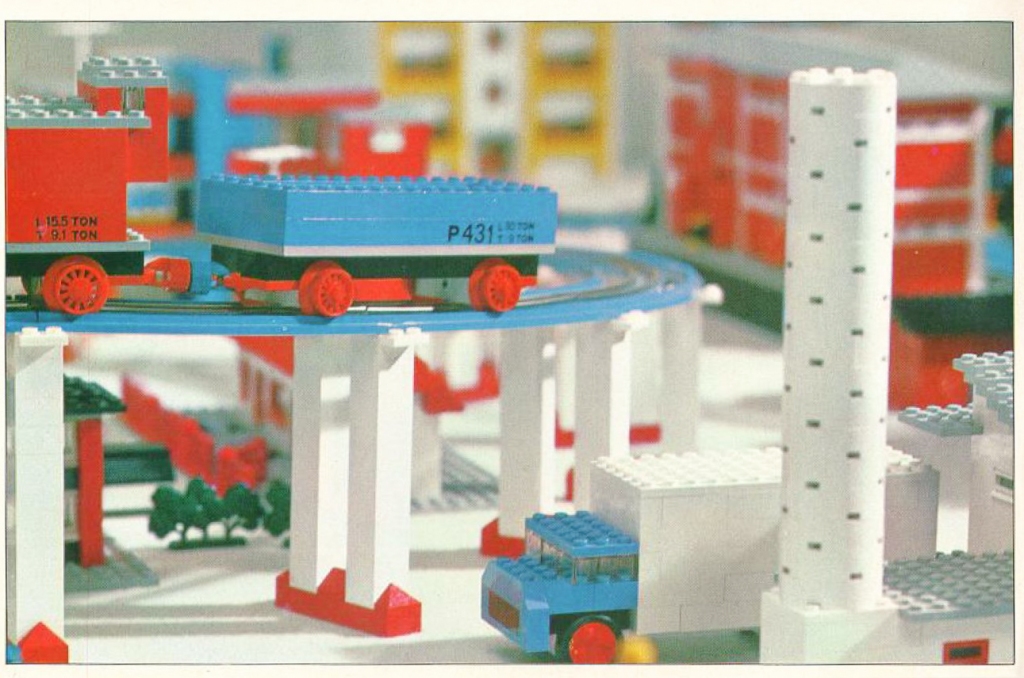



You will notice that I did not reproduce the train movement with a slow shutter speed. This is because at the time of photographing the train did not run smoothly. I am sure this is a familiar problem if you have played with the 12V train yourself. I remember it did not always run smoothly even 50 years ago. It was only after the photo shoot that solved this problem which was essential for the movie that I made afterwards. See here how to fix yours!
And here are some views that have NEVER been seen before!

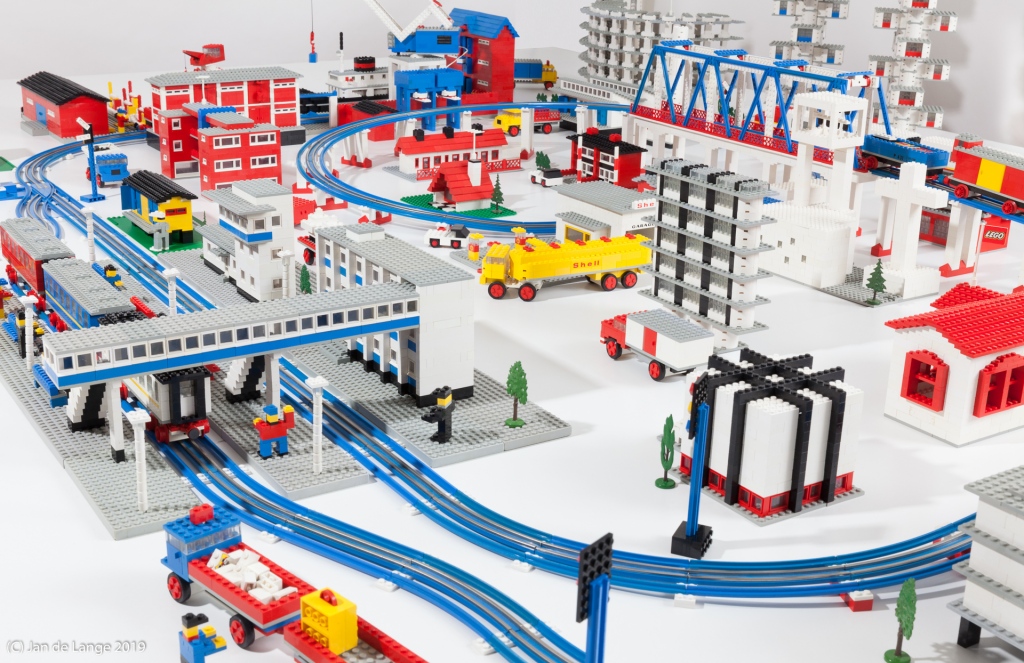
Because creating the build was a lot of work and because at some time I will have to take it apart again, I thought it would be fun to create a video of the train running on the tracks. So that, even when all pieces are back in the boxes I will still have a movie to remember what it was like to bring 50 years of Lego history back to life in 2019.
So here it is…
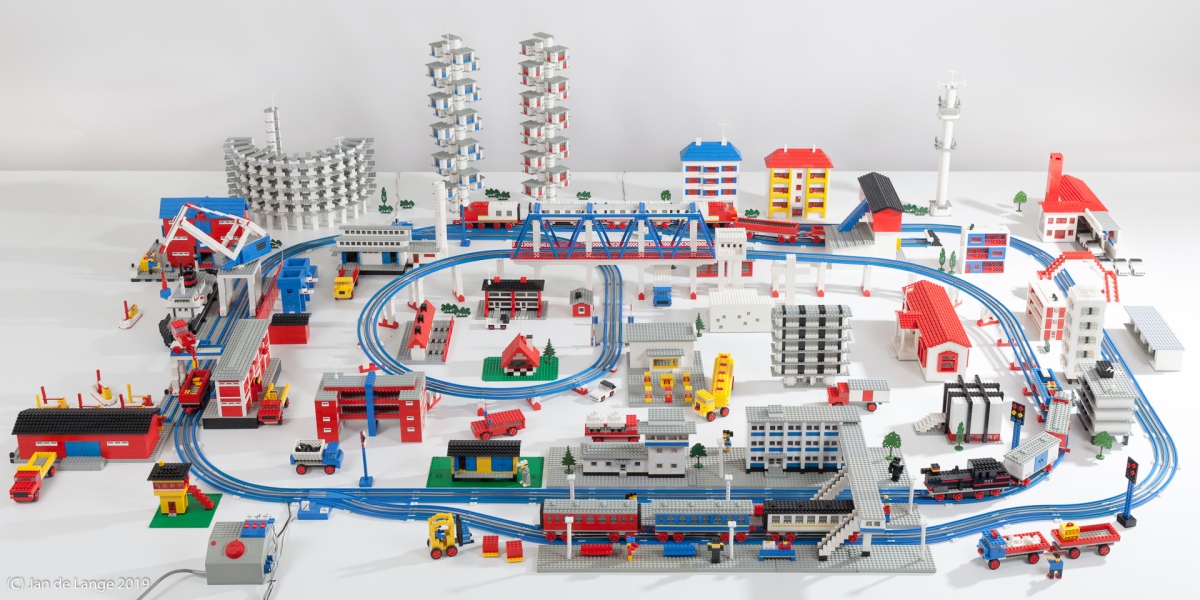






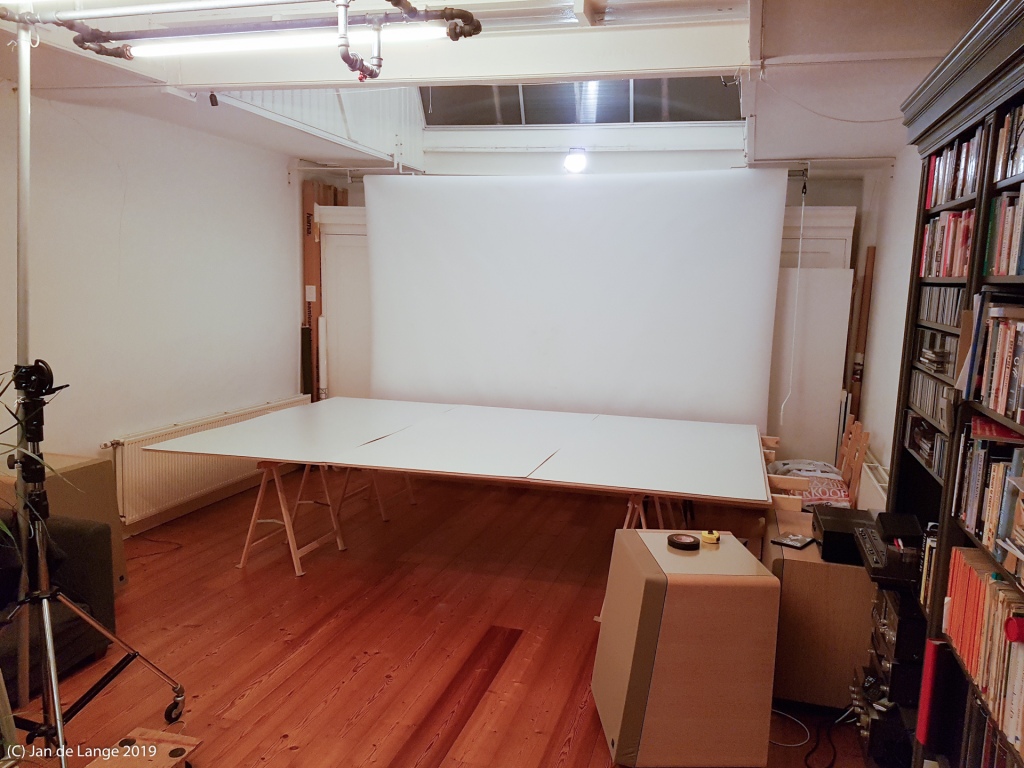



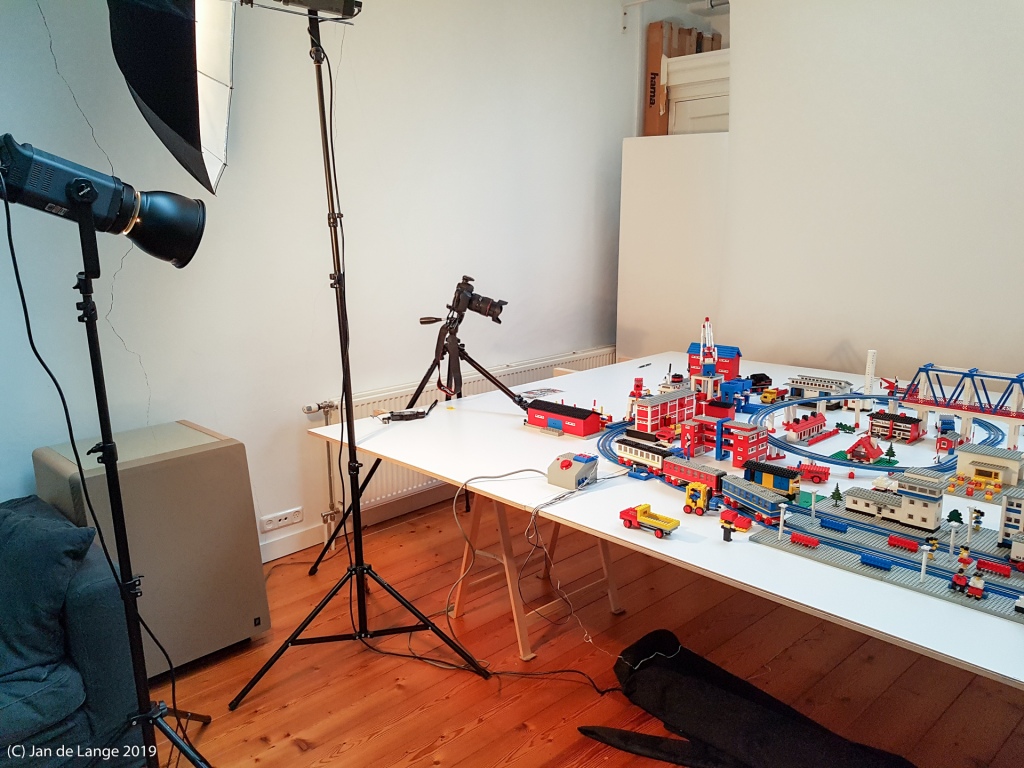
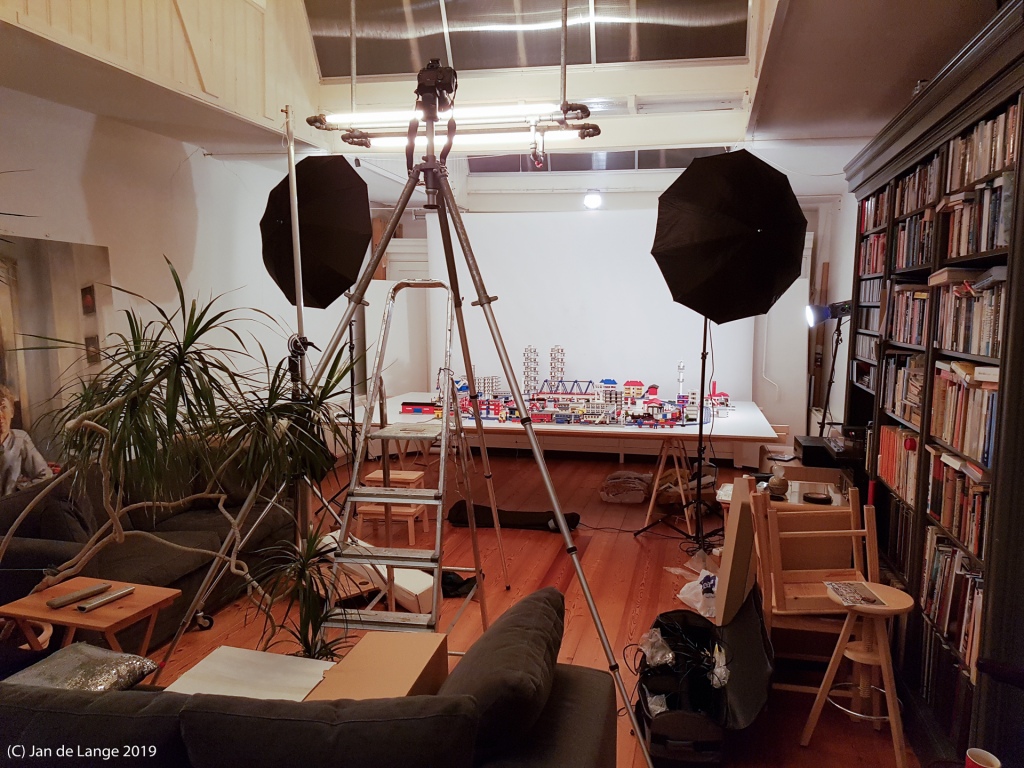
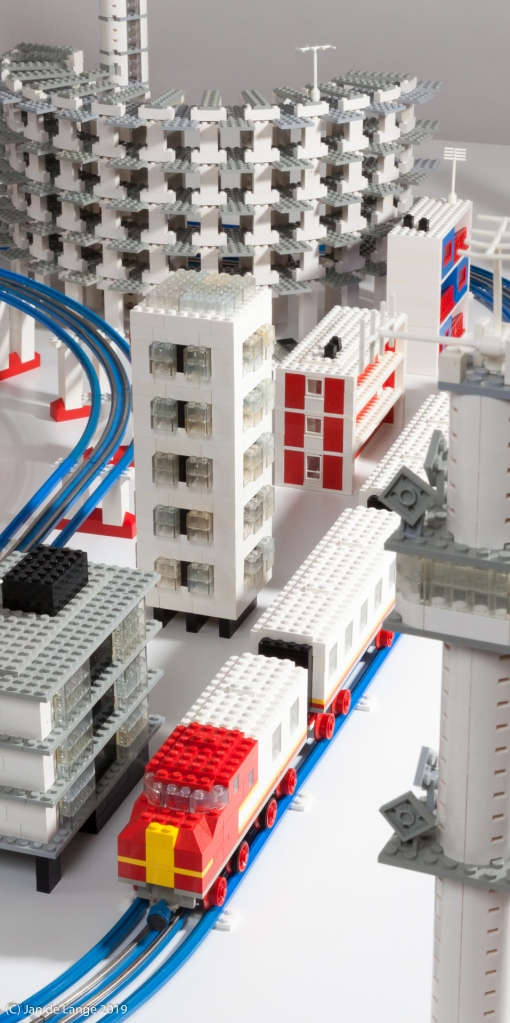
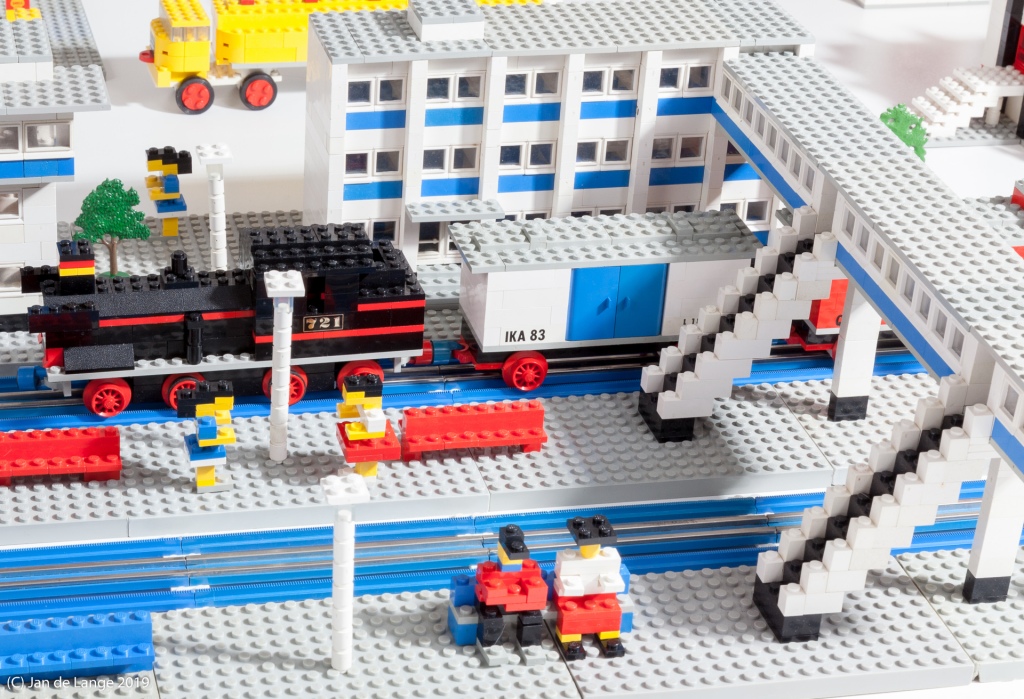


Beste Jan,
Wat heb je iets geweldigs gecreëerd. Het favoriete Lego-tijdperk.
Het lego weer als nieuw. Wat een mooie uitvinding.
Ik ben zeer onder de indruk.
Ikzelf ben ook uit het bewuste boek de lego aan het nabouwen.
Niet alleen de treinbaan van het achterblad, ook de overige treinbanen.
Het is een enorme puzzel om het na te maken weet ik uit eigen ervaring.
Daar bent u zeer goed ingeslagen. Vele bouwwerken zijn slechts van een kant afgebeeld en sommige onduidelijk. De autofabriek bijvoorbeeld is voortreffelijk gelukt.Om na te bouwen kan ik uw foto’s heel goed gebruiken. Zoals de achterkanten van de flatgebouwen met blauwe en rode dak zijn super.en nog veel meer gebouwen
Ik raak niet uitgekeken!
Hartelijk dank.
LikeLiked by 1 person
Hallo Theo, dank voor je leuke reactie! Ja het was een hele zomer puzzelen, maar ik ben blij met het resultaat. Overigens kwam ik er later achter dat een aantal achterkanten ook in Lego Idea Book 242 staan. Dan zul je zien dat ik andere achterkanten heb bedacht dan de makers. Maar dat maakt niet uit, Lego is toch vooral ook om zelf dingen te bedenken en te bouwen. Veel succes met je projecten. Als je iets on-line zet ben ik heel benieuwd.
LikeLike
Hello Jan, I came across to your blog since you are referring to the big Saturn V platform in the pictures of the Idea book 241. First of all, I would like to congratulate with you for the challenging work you made, it is really impressive! Second, I would like to know if possible how to contact Lego experts since I would like to get some info about a big original vintage playset I have, the Apollo Saturn V platform you mentioned. It comes from the 70s and it is a huge playset. I would like to know a bit of history of it if possible. Thank you, best regards. Christian
LikeLiked by 1 person
Hello Christian, thanks for your compliments! Do you mean the huge saturn build in the Ideabook 241? That is a giant! Was that a playset? Wow. Sorry, I do not know how to get in contact with anyone knowing something about these old designs. I would be interested myself. You could try the forum on Bricklink.com. Let me know if you find anything. Regards, Jan
LikeLike
Hi there,
I just saw your videos on youtube – amazing! This is probably my favourite lego scene from any lego book. So creative. I’m very impressed by the way that you managed to recreate all the buildings, even the ones in the background like the round building and the tall towers. You must have had a lot of fun doing it!
Erik
LikeLiked by 1 person
Hi Erik, thanks for your feedback. Imagine the people that have designed this, really impressive. Yes indeed, lots of fun! Cheers, Jan
LikeLike
Amazing build and awesome project – love it – it is something special with the old “simple” builds – its about creativity and fun!
LikeLiked by 1 person
Great job Erik. Greetings from Limassol, Cyprus. Trying to recreate my 1980s childhood by creating a vintage Lego town and I’m close to 90% of completion. Thanks for sharing your work!
LikeLike